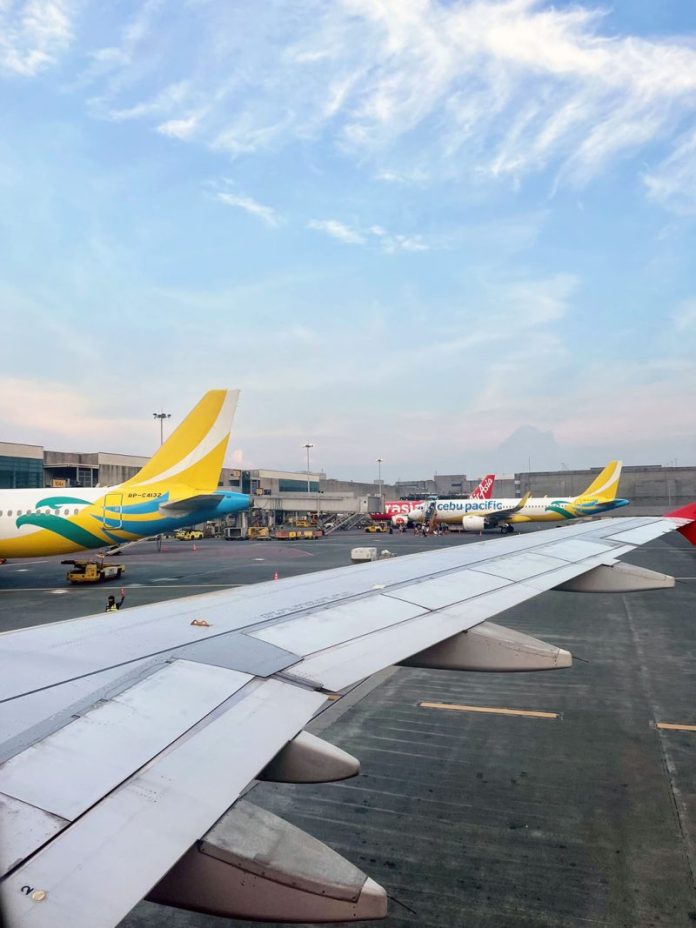-
Passenger traffic and flight movement at the Ninoy Aquino International Airport trended upward trend in the first half of 2023
-
The Manila International Airport Authority says 78% more passengers passed through the airport from January to June 2023
-
Flight movements shot up 42% y-o-y, equivalent to 100% of the flights handled at NAIA in the first half of 2019
Ninoy Aquino International Airport (NAIA) passenger traffic and flight movement were on an upward trend in the first half of this year.
The Manila International Airport Authority (MIAA) recorded a total of 22.22 million international and domestic passengers passing through the gateway from January to June 2023, an increase of 78% year-on-year and only 8% lower than the pre-pandemic level in 2019.
Flight movements likewise climbed 42% y-o-y to 135,883, equivalent to 100% of the flights handled at NAIA in the first half of 2019.
“We are pleased to experience these surges in statistics – a strong indication that passengers have regained the confidence to travel again. The double-digit surge in our flight movements and passenger volume is enough ground for optimism that the aviation industry is steadily heading towards full recovery,” MIAA officer-in-charge Bryan Co said in a statement.
When comparing the first two quarters of this year, MIAA said the 11.36 million passengers who flew out and into NAIA from April to June indicate 5% growth over the 10.86 million passengers in the first quarter.
MIAA also saw a 2% uptick in flight movement, with 68,689 flights handled in the second quarter of this year, up from 67,194 flights handled from January to March this year.
Comparing closely this year’s international and domestic figures with pre-pandemic figures, MIAA said there was a notable boost in international passengers in June, at 1.75 million, a number that was 82% of June 2019’s figures. MIAA said January’s international foot traffic was equivalent to 74% of January 2019’s tally.
Domestic operations in the first half of 2023, meanwhile, demonstrated consistent strength, outperforming the flight movement and passenger volume of the same period in 2019.
“Comforted with the consistent growth in numbers, with airlines introducing new routes, and with new airline players coming in, we will pursue without let-up our improvement projects, especially those that would highly impact the passenger experience inside and outside of the terminals,” Co said.
MIAA completed recently its Schedule and Terminal Assignment Rationalization (STAR) program aimed at optimizing capacity at the four NAIA terminals. The STAR program entailed reassigning some international airlines from NAIA Terminal 1 to NAIA Terminal 3 and moving all Philippine Airlines international flights to NAIA Terminal 1.
MIAA said this strategy paved the way for confining international flight operations to only NAIA Terminals 1 and 3, while NAIA Terminal 2 became a purely domestic terminal, together with NAIA Terminal 4, which caters to turboprop operations.
The airport operator said partner agencies like the Bureau of Immigration (BI), Bureau of Customs, and Bureau of Quarantine, benefitted from the reassignment, as their NAIA Terminal 2 personnel are now re-deployed to NAIA Terminals 1 and 3, thereby ensuring full manning of their counters at the two terminals.
With NAIA Terminal 2 now servicing all domestic flights of PAL, AirAsia Philippines, and Royal Air Philippines, it can accommodate up to 10 million passengers per year from its design capacity of 7.5 million passengers.
MIAA noted that the removal of immigration counters and other infrastructure mandated for international flight operations freed up needed space for unhampered passenger movement inside the terminal.
While domestic AirAsia and Royal Air passengers, which account for around 10,000 passengers per day on average, now have more space at NAIA Terminal 2. This change also reduces congestion at NAIA Terminal 4 by 75%, providing adequate space for Cebgo, AirSwift, and Sunlight Air passengers.
MIAA said the implementation of the STAR program necessarily brought an increased number of passengers to NAIA Terminal 3, a reason why MIAA stayed true to its commitment to BI to expand its work area in the terminal.
From the 26 immigration counters at the start of 2023, MIAA has successfully added 18 more counters, placing the number to date at 44 departure immigration counters for NAIA Terminal 3. By the end of 2023, MIAA hopes to further deliver on its commitment to complete the construction of an immigration annex adjacent to BI’s existing location at the departure level.
Once in place, an additional 24 counters will become available to service overseas Filipino workers, senior citizens, differently/specially abled persons, pregnant women, diplomats, or other passengers who need special assistance.
RELATED READ: NAIA hits highest passenger volume in April since pandemic





